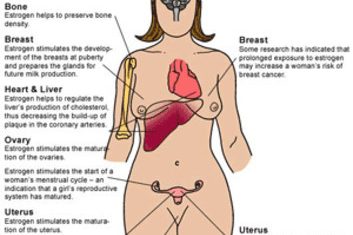For many people the word “cancer” is synonymous with ”pain.” The nightmare of uncontrollable agony is perhaps as terrible as fear of the disease. On the other hand, many of us are frightened of side affects from pain medications, and worry about the threat of addiction. Fortunately, medications can control most pain and with care, this can be done safely.
There is a clear role for non-narcotic pain medications such as acetaminophen (Tylenol), ibuprofen (Advil) and celecoxib (Celebrex). These can provide relief from mild discomforts. However, the intensity of pain that occurs in over 70% of cancer patients requires opioid-based medicines. Also known as narcotics these are the strongest drugs in our armamentarium. They are also the ones about which we worry the most. We will focus on them here.
Legal narcotic pain meds come is complex variety of forms, all related to morphine. They include codeine, hydromorphone (Dilaudid), oxycodone (Roxicodone), Oxycontin, fentanyl (Duragesic and others), methadone and morphine itself. They come in a myriad of strengths and forms including liquid, tablet, suppository, oral, intravenous, topical and even as a lollipop. Their time to action and duration of effectiveness range from minutes to days. They have slightly different effects and side effects in each person.
This wide mix of products makes it possible, in over 90% of patients, to find a combination that will control pain. Doctors can avoid or limit side effects while getting maximum benefit. Physicians experienced with these medications learn to find a balance to control pain, so patients function at the highest level.
There are certain rules for narcotics that are worth knowing. By understanding these concepts, patients can work with their doctors to achieve maximum benefit. Perhaps that is the most important rule … tell your physician what you are experiencing and what you need. Remember there are many choices and if one set of medications is not working, change. Pain is not necessary or beneficial. Pain makes us weak, limits recovery and deprives us of the opportunity to live that day.
For ongoing cancer pain, take two different narcotics. The first drug is in the patient’s control. This should be a fast onset, short acting medicine…it should start working in less then 20 minutes and last about 2-3 hours. The patient decides when to take this medicine depending on whether they are in pain at that moment. The patient should take as little or as much of this short acting drug as they need. The doctor controls the second medication. It should be a long acting medication taken on a schedule, whether or not the patient is having pain at that moment. These are taken every eight, 12 or 24 hours, depending on the particular drug. Long acting pain patches can last 3 days. Thus, the long acting medication controls most of the pain, while the short acting treats “breakthrough” discomfort.
All narcotic pain medications are constipating. Be ready. Start and continue a bowel-stimulant regimen such as prunes, prune juice, senna, or Miralax. Take the bowel medication as long as you are on the pain med. Adjust so you move your bowels on your normal schedule. Narcotics can at times cause nausea. This may require changing to a different pain med. Make certain your bowels are working and tell your doctor.
Pain medications can make you sleepy, especially when you first start or when you change doses. Do not drive or do risky activities until you are certain you are alert and capable. Authorities recommend not driving for at least 24 hours after a significant change in pain medication. Do not take pain medication with other sedative medications or alcohol without consulting with your doctor.
Misunderstandings about pain medications are important to discuss. Used for pain, narcotics rarely cause addiction. Addiction is problem when opioid pain meds are used to control anxiety, depression, as sleeping pills or simply to get high. Then there is real risk. If you need help with those sorts of problems, ask your doctor.
There has been a significant increase in prescription pain medication overdose in the last 10 years. In general, the direct use of narcotics to treat cancer pain is not part of this problem. Most overdoses are related to the use of narcotics to treat chronic non-malignant pain. The perversion of narcotic use as part of addiction adds to this crisis. Finally, accidental overdose, often by minors, is increasing rapidly. Keep pain medications secure and out of reach of children. Do not leave where they can easily be stolen or accidently taken. If you believe someone may have taken an overdose, call 911.
Often patients will not take pain medications because of concern that their body will “get used to them” and “when I really need it, it will not work.” This is false. Pain medications always work. Sometimes there is a need to change dose or brand, but it is not true that if you relieve pain now that you will not be able to relieve it later.
You may have heard pain medications can affect breathing. Only in very high doses is this an issue. Used as directed by a physician to treat pain, narcotics are not likely to decrease respiration.
Do not crush, split or dissolve pain pills or patches, unless they are scored for cutting. Several time-release medications are almost completely de-activated by such action. Others become much more powerful, releasing 12 hours of pain medication in minutes. If you are not sure, ask your pharmacist.
There is wide variation in the cost of pain medication. Many narcotics are covered by most insurance plans, but a few by almost none. If you are having trouble paying for pain meds, let your doctor know. There is usually a safe, effective, affordable alternative.
Almost as much as cancer, pain is the enemy. Above all else, it reminds us we are sick. With patience and proper care, we can control pain. Work with your doctor to design the pain regimen, which is proper for you.







Comment